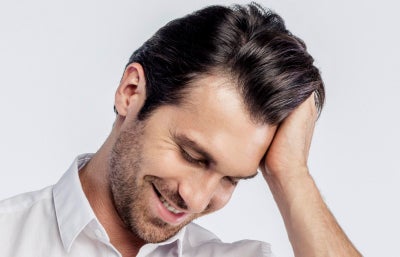Hair transplantation is commonly associated with scalp restoration, but it’s increasingly being used to help individuals enhance or restore facial hair, including sideburns, mustaches, beards, and even eyebrows. Facial hair can play a significant role in one’s identity and personal style, and its thickness or presence can be a source of confidence for many.
While genetics largely determine the growth and pattern of facial hair, factors like trauma, scarring, or certain medical conditions can also result in patchy or absent hair in these areas. Fortunately, Hair Transplant Dubai techniques have evolved to offer a reliable solution for restoring facial hair where it is thin or missing.
How Hair Transplant Works for Facial Areas
Hair transplants involve relocating healthy hair follicles from one part of the body to another. In facial hair restoration, the donor area is usually the back or sides of the scalp, where the hair is more resistant to thinning. These hairs are carefully extracted and implanted into the desired facial region.
For areas like sideburns and beards, the direction, angle, and density of the transplanted hair must be matched precisely to blend in naturally with existing facial hair. This attention to detail is crucial to ensure a seamless and realistic result.
Benefits of Restoring Facial Hair Through Transplantation
The appeal of a facial hair transplant extends beyond appearance. It can also be a way to:
Enhance facial symmetry and structure
Fill in sparse areas or define specific shapes
Restore hair in areas affected by injuries or scars
Support self-expression and identity
Whether it’s a fuller beard, well-defined sideburns, or a sharp goatee, the ability to personalize facial hair through a transplant opens doors for many seeking a permanent and natural-looking solution.
What Areas Can Be Targeted?
Facial hair transplants can address multiple areas depending on personal preferences and goals. Some of the most common target zones include:
Sideburns
Sideburn restoration is often chosen by those who have undergone facial surgery or those whose sideburns never fully developed. This area requires careful placement to ensure the new hair grows in the correct direction and density.
Beard and Mustache
Many opt to define or thicken their beard or mustache for a more masculine look. Some may only need to fill in gaps, while others aim for complete coverage of the cheeks and jawline.
Cheek Lines and Jaw
For those looking for a well-sculpted beard line, the cheeks and jaw area can be enhanced with precision-placed grafts, allowing for a bold or refined appearance.
Key Considerations Before Undergoing a Facial Hair Transplant
Individuals considering this option usually have questions about eligibility, results, and the procedure itself. The decision to move forward often comes down to personal goals and the availability of suitable donor hair.
A consultation with a hair transplant specialist typically involves evaluating facial structure, examining current hair growth patterns, and discussing desired outcomes. Good candidates usually have healthy hair in the donor area and realistic expectations about what can be achieved.

What to Expect from the Results
Results from facial hair transplants tend to look very natural when performed with care. Transplanted hairs continue to grow just like the rest of the facial hair, and they can be trimmed, shaped, or shaved as desired. Over time, the growth becomes permanent and blends seamlessly with the surrounding hair.
Most people see gradual changes as the new hair grows in, with a noticeable difference within a few months and full results typically visible after a longer period. Patience is key, as it takes time for the follicles to establish and grow in their new location.
FAQs
Can anyone get a hair transplant for sideburns and facial hair?
Not everyone is a candidate, but many individuals with patchy or missing facial hair due to genetics, injury, or other causes can benefit. The availability of donor hair and personal goals are key factors in determining eligibility.
Will the transplanted hair match the existing facial hair?
Yes, when done correctly, the transplanted hair matches in texture and direction, making it nearly indistinguishable from natural facial hair.
Is the transplanted facial hair permanent?
The results are long-lasting. Once the transplanted hair follicles take root, they continue to grow and can be groomed like the rest of the facial hair.
How long does it take to see results?
Initial growth may begin within a few months. Final results are typically appreciated after a longer duration, as the hair continues to thicken and take shape.
Can facial hair transplants be used to cover scars?
Yes, they are often used to conceal scars from previous injuries or surgeries by implanting hair directly into the affected area, helping it blend in with surrounding hair.
Is it possible to choose the shape and style of the beard or sideburns?
Yes, facial hair transplants are highly customizable. Individuals can choose the shape, thickness, and outline they desire, allowing for a personalized and natural appearance.
Will the new hair grow like normal facial hair?
Absolutely. Hair Transplant in Dubai grows naturally and can be shaved, styled, or maintained like the rest of the facial hair.
Conclusion
Facial hair, especially sideburns and beards, can be a defining feature of one’s appearance. When patchy growth, scarring, or lack of hair affects this area, it may impact self-esteem and confidence. Hair transplant offers a proven and natural-looking way to restore or enhance facial hair with long-lasting results.
With modern techniques and skilled application, facial hair restoration can help individuals achieve the look they’ve always wanted. Whether aiming to define sideburns or fill in a patchy beard, the possibilities today are broader than ever.


